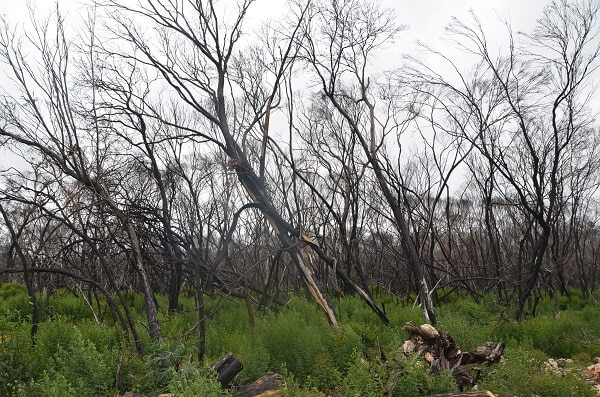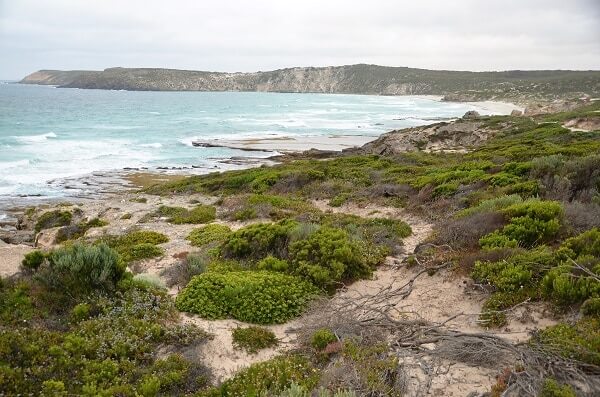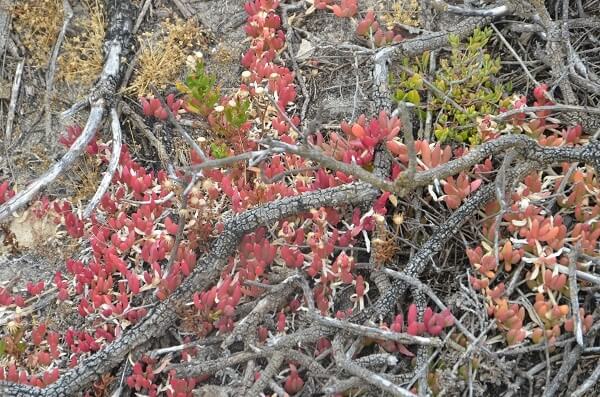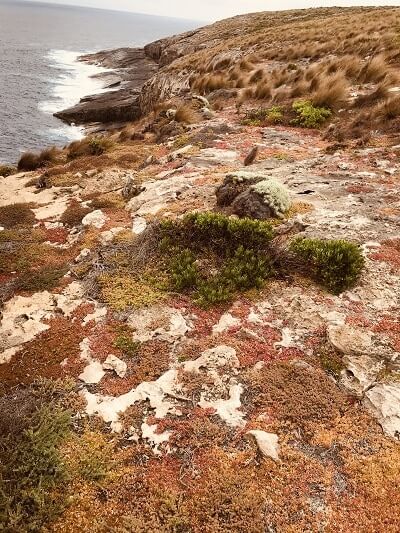No kangaroos welcome me as I land on the shores of Australia’s third-largest island, but two centuries ago in 1802, a large number of them greeted English explorer Matthew Flinders.
He proceeded to seize 31 of them as meat for his ravenous crew and as a token of gratitude, named the southern discovery Kangaroo Island.
Only a 45-minute ferry ride from Cape Jervis on the southern edge of South Australia, this landmass with its towering and colourful sea cliffs, lush rolling fields, footprint-free beaches, ribbons of native vegetation, thrilling wildlife, and boutique food and wine, has long been a top bucket list destination with both international and domestic travel connoisseurs.
The island is 155-km long and 55-km wide, covering a land area of 4416 square km and encircled by 509 km of coastline. While Kingscote is the island’s busiest town and home to a tiny airport, Penneshaw is another small town where the ferry from the mainland arrives. Both are located on the eastern part of the island.
Marked by the footprints of American sealers and whalers, French navigators and English colonisers, the early history of the island is no less invigorating. When South Australia was formally established as a British Province in 1836, Kingscote became the capital and remained so for four months, until Adelaide in the mainland took over. Farming became the principal occupation of the local people and it matured further with the soldier resettlements after World War II. A few buildings, lighthouses, graveyards, memorials and relics still remain as poignant emblems of the early era.
READ ALSO: Narooma: A road trip to the South Coast
Unquestionably Kangaroo Island is a beautiful making of Mother Nature, who at times doesn’t hesitate to destroy her own creation with deadly acts of earthquakes, floods, landslides and other disasters. Kangaroo Island became a victim of this natural phenomenon early last year when devastating bushfires ripped through almost half of the island, terminating infrastructure, vegetation, and landscape, and most disturbingly killing several native animals, livestock and two humans. The calamity was so spread that 96% of the 326 square km Flinders Chase National Park – one of Australia’s top protected sanctuaries – turned black. It is said even the birds on the island stopped chirping. Many including the 4000-plus locals, thought the return to former glory may not happen soon.
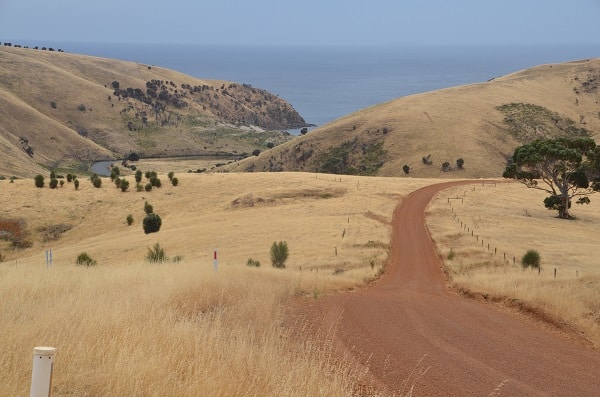
Mother Nature thought differently. Twelve months on, it’s amazing to see how the ecosystem is bouncing back, with huge splashes of greenery emerging from a blackened landscape.
With this tragedy still fresh in mind, my island odyssey kicks off on a depressing note, particularly after hearing from Nikki Redman, the tour guide from Kangaroo Island Odysseys, the magnitude of the bushfire. But the gloom starts to fade as I notice the regeneration all around me.
“Nature is slowly returning to normal,” says Nikki as I see colours other than black decorating the landscape, flora like yucca plants springing back to life. We hear golden whistlers and wattlebirds singing, and spot wedge-tailed eagles and black cockatoos, a special offering of the island, up in the sky.
One way of supporting the island in its recovery is simply to visit.
In addition to observing nature’s renaissance, there is still enough unaffected by the bushfires to take in and enjoy. It will not only aid the rescue but will also boost the local economy shattered further by the COVID-19 pandemic. With international travel barred, for the time being, it’s perhaps the best time to explore this gem in our own backyard, not only to savour its splendours but also to support its retrieval to routine.
READ ALSO: Discovering New South Wales by rail
There’s a lot in its menu card, so I list some of the top drawcards that make the island so special.
Wildlife naturally
Kangaroo Island is abundant with native birds, koalas, short-beaked echidnas, and of course kangaroos and wallabies. A large number of them died from the bushfire but there are plenty that survived and it’s possible to encounter them in their own habitat almost everywhere.
Endangered sea lions
The southern coast of the island is home to sea lions. Watching them in large numbers resting in the sun or riding the waves on to the beach in true Aussie style is an unforgettable experience. On a guided tour it’s possible to get close to these animals, even pose for a selfie.
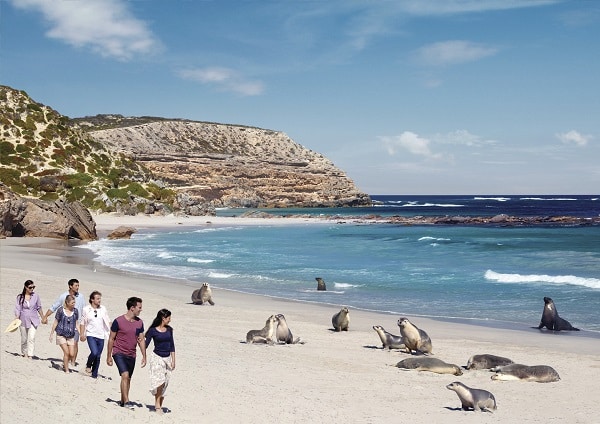
Stunning seafront locations
Getting intimate with sun, sea and sand is popular at several locations along the coastline – Vivonne Bay in the south, Western River Cove Bay, Snell Bay, Stokes Bay and Emu Bay in the north, and Pennington Bay in the west are famous for their spectacular settings and beaches to suit every mood.
Rocky wonders
Located at the western end of the island inside the Flinders Chase National Park are Australia’s two iconic rock growths – Remarkable Rocks, an impressive natural formation of orange-lichen-covered granite boulders by the sea, and the Admirals Arch, a stalactite-covered eroded rock bridge outside of which thousands of fur seals like to sunbathe.
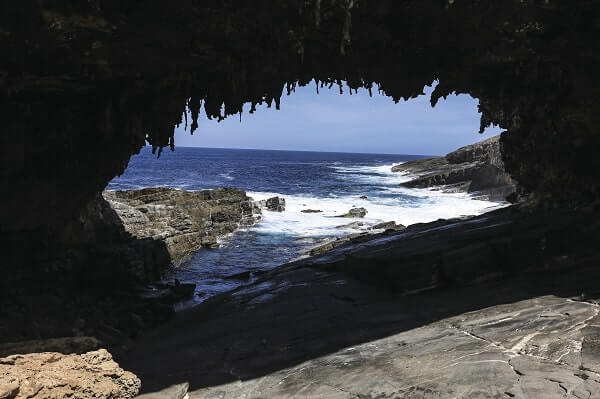
Old lighthouses
Many shipwrecks occurred around the island since official settlement, leading to the building of lighthouses at nearby Cape Willoughby in 1852, Cape Borda in 1858, Cape St Albans in 1908 and Cape du Couedic in 1909. All of these exist today as silent witnesses of the colonial past.
Little Sahara
Away from the coast, naturally evolved inland sand dunes offer tours and activities for the adventure-minded, sliding down the sandy hill being a favourite.
Penguin colony
Penneshaw is the home to a colony of little penguins which can be seen on a guided tour in the evenings only.
Local produce
The pristine and stress-free environment provides a fertile platform for the growth of premium produces. Visitors have the chance to taste some of the finest seafood, lamb, honey and locally made wine, cider, beer and gin.
Travel notebook
Getting There
QantasLink operates daily flights from Adelaide, otherwise by ferry with SeaLink from Cape Jervis, located two hours south of Adelaide with coach services available to connect ferries.
Stay
All sorts of accommodation are available, from a swag under the trees to five-star suites. Aurora Ozone Hotel at Kingscote and Sea Front Hotel at Penneshaw are good choices.
Tours
Kangaroo Island Odysseys specialise in various small group tours and tailor-made itineraries.
For more information, visit www.southaustralia.com and www.tourkangarooisland.com.au
READ ALSO: Zoofari Animal View Lodge, a piece of Africa in NSW



